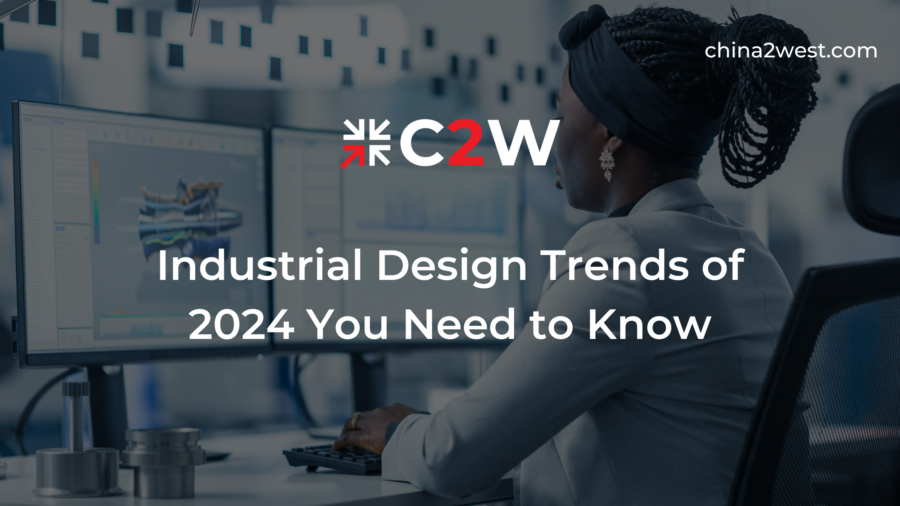In the dynamic realm of industrial design, the future is always on the horizon, bringing with it innovative trends that shape the way we conceive and create products.
As we approach 2024, let’s delve deeper into the cutting-edge industrial design trends that are set to redefine the industry.
Sustainability Takes Center Stage
Sustainability is not just a design choice; it has become a mandate for the industry. Designers are embracing environmentally conscious practices as a response to the growing demand for eco-friendly products.
This shift is evident in the incorporation of sustainable materials and the adoption of production methods that minimize ecological impact.
A key aspect of this sustainability drive is the emphasis on carbon-neutral manufacturing. In 2024, companies are investing heavily in renewable energy sources, actively offsetting carbon emissions, and implementing innovative techniques to achieve a net-zero impact.
This commitment to environmental responsibility is not merely a trend; it’s a strategic imperative that aligns with the global push towards a greener future.
The Green Revolution in Design
Sustainability in design is not limited to material choices; it encompasses the entire product life cycle. Designers are increasingly focused on creating products that are not only made from sustainable materials but are also designed to be easily disassembled and recycled.
This holistic approach ensures that sustainability is embedded in every aspect of the design process.
Carbon-Neutral Manufacturing
Achieving carbon neutrality in manufacturing involves a multi-faceted approach. Companies are not only investing in renewable energy but also optimizing production processes to minimize energy consumption.
This includes the integration of energy-efficient technologies and the adoption of closed-loop manufacturing systems, where waste is minimized, and resources are continually reused.
Materials Innovation: Beyond the Ordinary
The materials landscape in industrial design is undergoing a revolution with the introduction of next-gen materials. From bioengineered substances to advanced polymers, designers are pushing the boundaries of what’s possible.
These materials not only offer enhanced durability and flexibility but also present transformative properties that open up new avenues for creativity and functionality.
While bioplastics have made significant strides in recent years, designers are exploring even more diverse and sustainable alternatives. Mushroom-based materials, algae-based plastics, and recycled composites are gaining traction.
This diversification is a proactive response to the industry’s increasing need for innovative, planet-friendly solutions in material selection.
Next-Gen Materials
The next generation of materials goes beyond traditional constraints. Smart materials that respond to environmental changes, self-healing polymers, and lightweight yet ultra-strong composites are becoming integral to the designer’s palette.
These materials not only enhance the performance of products but also contribute to the overall sustainability of the design.
Sustainable Materials Beyond Bioplastics
Bioplastics, while a step in the right direction, are just the tip of the iceberg. Designers are exploring biomimicry, drawing inspiration from nature to create materials that are not just sustainable but also biodegradable.
Algae-based plastics, for instance, leverage natural processes for decomposition, reducing the environmental impact of discarded products.
Human-Centered Design Evolves
Human-centered design, a long-standing principle, is evolving in exciting ways. It’s no longer just about meeting user needs; it’s about personalization.
In 2024, products are being tailored to individual preferences and lifestyles, creating a more intimate connection between users and their possessions.
This trend towards personalization is facilitated by advanced data analytics and artificial intelligence. These technologies enable hyper-personalized design solutions, where products cater to specific individual requirements.
Understanding and anticipating the unique needs of users is becoming a cornerstone of successful design in the modern era.
Personalization in Design
The era of mass production is giving way to personalized design experiences. Advanced algorithms analyze user data to understand preferences, leading to the creation of products tailored to individual tastes.
From customized color schemes to ergonomic adaptations, personalization is enhancing user satisfaction and fostering a deeper connection between consumers and their possessions.
Emotional Design
In 2024, industrial design is not just about function; it’s about evoking emotions. Designers are incorporating emotional elements into products, creating experiences that resonate on a deeper level.
Whether through aesthetics, haptic feedback, or interactive features, emotional design is becoming a powerful tool for engagement.
Emotional design is not merely about creating aesthetically pleasing products but also about designing experiences that evoke positive emotions. Products are crafted to elicit joy, nostalgia, or a sense of accomplishment, creating a lasting impression on the user.
This emotional resonance not only enhances brand loyalty but also ensures that the product becomes an integral part of the user’s life.
The Digital Revolution Continues
The fusion of physical and digital realities is a trend that continues to gain momentum. Extended Reality (XR), including Augmented Reality (AR) and Virtual Reality (VR), has transcended novelty to become integral tools in the design process.
XR is being utilized for everything from immersive prototyping to virtual user testing, providing designers with unprecedented insights into user interactions.
Blockchain technology is also making significant inroads into industrial design. Offering transparency, security, and traceability in the supply chain, designers are leveraging blockchain to verify the authenticity of materials, track the production journey, and ensure ethical practices.
This adds a layer of accountability to the design process, aligning with the growing consumer demand for transparency.
Extended Reality (XR) Integration
The integration of Extended Reality (XR) into the design process is transforming how products are conceptualized and brought to life. Augmented Reality (AR) and Virtual Reality (VR) are not just used for marketing or presentation purposes but are integral in the early stages of design.
Designers can visualize and interact with 3D models in real-time, making the prototyping phase more dynamic and efficient.
Blockchain in Design
Blockchain technology is not limited to cryptocurrencies; it’s becoming a game-changer in industrial design. Designers are using blockchain to create transparent supply chains, trace the origins of materials, and ensure ethical production practices.
This not only adds a layer of accountability but also resonates with consumers who are increasingly conscious of the ethical implications of their purchases.
AI Accelerating Design Innovation
Artificial Intelligence (AI) is playing an increasingly crucial role in revolutionizing industrial design, and ChatGPT and Midjourney are at the forefront of this transformation.
Designers are leveraging AI to streamline communication, ideation, and problem-solving. The natural language processing capabilities of these platforms facilitate efficient collaboration, speeding up the design process and enabling faster iterations.
Beyond communication, AI is driving design solutions. Generative design algorithms and AI-assisted ideation tools are providing designers with powerful resources.
AI-Driven Design Solutions
The marriage of AI and design goes beyond communication. Generative design algorithms automate the ideation process, providing designers with a multitude of potential solutions based on specified parameters.
This not only expedites the design phase but also introduces novel concepts that might not have been considered through traditional methods.
As we step into 2024, the industrial design landscape is marked by a convergence of sustainability, materials innovation, human-centered design, the digital revolution, and the accelerating influence of AI.
Embracing these trends is not just a choice; it’s a strategic imperative for designers, manufacturers, and consumers alike.
The future of industrial design is so dynamic that maybe sometimes it’s hard to keep track. If you work with a professional team, you will be able to stay ahead of your game. C2W’s unique product design and development prowess, supported by their in-house global team of industrial designers and engineers, makes it the perfect partner for you to ensure your vision stays current. Contact us now!


